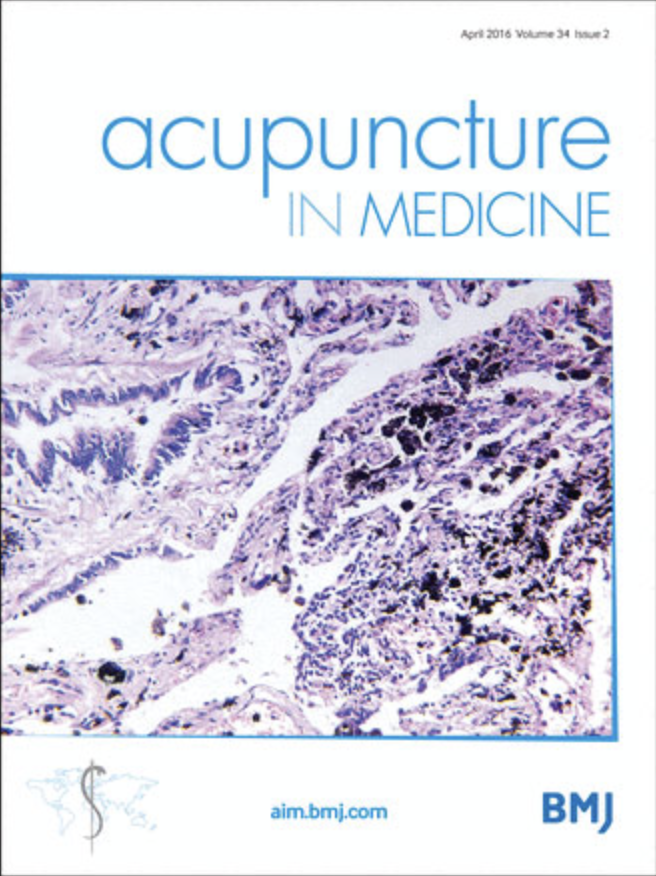Molecular Mechanism
How to submit an article:
- Registered users can submit any published journal article that has a unique DOI (Digital Object Identifier) name or link to Research Hub.
- For example, you can paste the full DOI link:
https://doi.org/10.1109/5.771073or just the DOI name:10.1109/5.771073into the field above and click submit. - The person who is first to submit a valid article to Research Hub will forever be credited for it, and every article submission earns you +6 Research Points.
Related Topics
Published research studies are articles that present the findings of original research that has undergone a peer-review process and has been made publicly available in scholarly journals, books or other media.
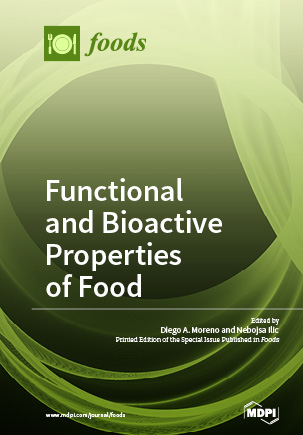
A Literature Review of the Pharmacological Effects of Jujube
2024 Jan 06 Foods Zhu D, Jiang N, Wang N, Zhao Y, Liu X
Review Article Cardiovascular Disease Neuroprotective JujubeJujube, a Chinese native plant with numerous active components, exhibits calming effects, nourishes blood, and strengthens the spleen and stomach, alongside promising neuroprotective and cardiovascular benefits.

Qi-Shen-Tang alleviates retinitis pigmentosa by inhibiting ferroptotic features via the NRF2/GPX4 signaling pathway
2023 Nov Heliyon Xiong M, Ou C, Yu C, Qiu J, Lu J, Fu C, et al.
Experimental Study Ferroptosis Qi Shen Tang Retinitis PigmentosaQi Shen Tang, a traditional Chinese medicine, was found to suppress retinal cell death in retinitis pigmentosa by inhibiting a process called ferroptosis.
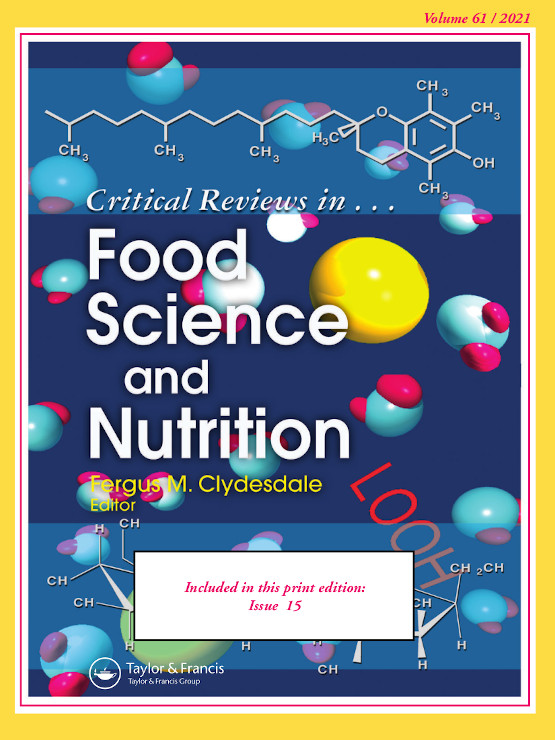
State-of-the-art review of theabrownins: from preparation, structural characterization to health-promoting benefits
2023 Aug 16 Critical Reviews in Food Science and Nutrition Cheng L, Wei Y, Peng L, Wei K, Liu Z, Wei X
Review ArticleTheabrownins, a major ingredient in dark tea, significantly contribute to multiple health benefits by modulating lipid metabolism, reducing weight gain, and preventing diseases, surpassing other tea types.
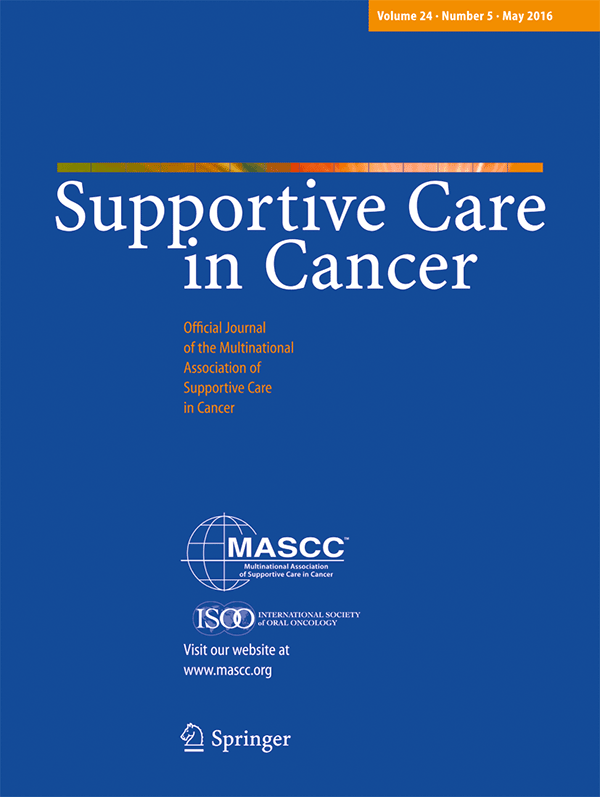
Acupuncture improves immunity and fatigue after chemotherapy in breast cancer patients by inhibiting the Leptin/AMPK signaling pathway
2023 Aug 05 Supportive Care in Cancer Li J, Fu R, Guo X, Pan Z, Xie J
The Leptin/AMPK signaling pathway is identified as a key molecular pathway affecting fatigue after chemotherapy in breast cancer patients; acupuncture treatment effectively improves post-chemotherapy fatigue, immune status, and reduces mitochondrial DNA mutations.
Experimental Study Clinical Study
Raspberry Leaves and Extracts-Molecular Mechanism of Action and Its Effectiveness on Human Cervical Ripening and the Induction of Labor
2023 Jul 19 Nutrients Socha MW, Flis W, Wartęga M, Szambelan M, Pietrus M, Kazdepka-Ziemińska A
In conclusion, we believe that raspberry extracts do not present a contractile effect on the uterine muscle and, even if this effect occurs, it is not very highly expressed, and is insignificant, so it will not lead to the release of regular uterine contractions.
Review Article Labour InductionResearch insights are moderated by the Research Hub team and offer an at-a-glance overview of interesting research findings.

2024 Foods
Jujube, a Chinese native plant with numerous active components, exhibits calming effects, nourishes blood, and strengthens the spleen and stomach, alongside promising neuroprotective and cardiovascular benefits.
Review Article Cardiovascular Disease Jujube Neuroprotective
A Literature Review of the Pharmacological Effects of Jujube
Zhu D, Jiang N, Wang N, Zhao Y, Liu X

2023 Heliyon
Qi Shen Tang, a traditional Chinese medicine, was found to suppress retinal cell death in retinitis pigmentosa by inhibiting a process called ferroptosis.
Experimental Study Ferroptosis Qi Shen Tang Retinitis Pigmentosa
Qi-Shen-Tang alleviates retinitis pigmentosa by inhibiting ferroptotic features via the NRF2/GPX4 signaling pathway
Xiong M, Ou C, Yu C, Qiu J, Lu J, Fu C, et al.

2023 Critical Reviews in Food Science and Nutrition
Theabrownins, a major ingredient in dark tea, significantly contribute to multiple health benefits by modulating lipid metabolism, reducing weight gain, and preventing diseases, surpassing other tea types.
Review Article
State-of-the-art review of theabrownins: from preparation, structural characterization to health-promoting benefits
Cheng L, Wei Y, Peng L, Wei K, Liu Z, Wei X
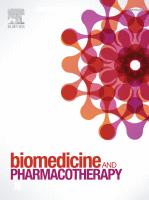
2022 Biomedicine & Pharmacotherapy
Pomegranate extract and its phytochemicals can potentially inhibit severe acute respiratory syndrome coronavirus 2 (SARS-COV-2) and improve gut microbiota, preventing obesity and diabetes.
Review Article COVID-19 Gut Microbiota Obesity Pomegranate
Medicinal uses, pharmacological activities, phytochemistry, and the molecular mechanisms of Punica granatum L. (pomegranate) plant extracts: A review
Maphetu N, Unuofin JO, Masuku NP, Olisah C, Lebelo SL
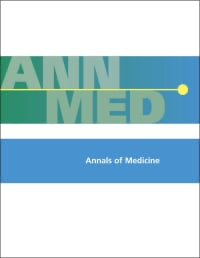
2022 Annals of Medicine
The Gui Zhi-Shao Yao herb pair in traditional Chinese medicine potentially treats chronic pain, anxiety, and depression through interactions with nine key targets.
Network Pharmacology Chronic Pain Depression
A network pharmacology approach to predict potential targets and mechanisms of “Ramulus Cinnamomi (cassiae) – Paeonia lactiflora” herb pair in the treatment of chronic pain with comorbid anxiety and depression
Pan HT, Xi ZQ, Wei XQ, Wang K
Review Articles
Review articles summarise and critically evaluate the current state of research on a specific topic or field by synthesising multiple primary research studies.

A Literature Review of the Pharmacological Effects of Jujube
2024 Jan 06 Foods Zhu D, Jiang N, Wang N, Zhao Y, Liu X
Review Article Cardiovascular Disease Neuroprotective JujubeJujube, a Chinese native plant with numerous active components, exhibits calming effects, nourishes blood, and strengthens the spleen and stomach, alongside promising neuroprotective and cardiovascular benefits.

State-of-the-art review of theabrownins: from preparation, structural characterization to health-promoting benefits
2023 Aug 16 Critical Reviews in Food Science and Nutrition Cheng L, Wei Y, Peng L, Wei K, Liu Z, Wei X
Review ArticleTheabrownins, a major ingredient in dark tea, significantly contribute to multiple health benefits by modulating lipid metabolism, reducing weight gain, and preventing diseases, surpassing other tea types.

Raspberry Leaves and Extracts-Molecular Mechanism of Action and Its Effectiveness on Human Cervical Ripening and the Induction of Labor
2023 Jul 19 Nutrients Socha MW, Flis W, Wartęga M, Szambelan M, Pietrus M, Kazdepka-Ziemińska A
In conclusion, we believe that raspberry extracts do not present a contractile effect on the uterine muscle and, even if this effect occurs, it is not very highly expressed, and is insignificant, so it will not lead to the release of regular uterine contractions.
Review Article Labour Induction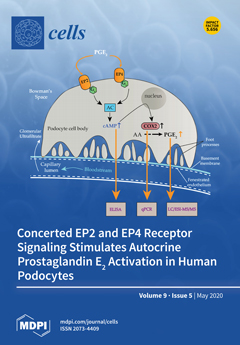
Progesterone Signaling and Uterine Fibroid Pathogenesis; Molecular Mechanisms and Potential Therapeutics
2023 Apr 09 Cells Ali M, Ciebiera M, Vafaei S, Alkhrait S, Chen HY, Chiang YF, et al.
Consumption of natural compounds as potential anti-UFs treatments is promising, since these compounds can be used on a long-term basis. This is especially beneficial for women pursuing pregnancy while undertaking treatment, since other pharmacological treatments such as SPRMs are not fertility friendly.
Review Article
A Chinese classical prescription Qianjinweijing Decoction in treatment of lung cancer: An overview
2022 Dec Biomedicine & Pharmacotherapy Liu PY, Zhao QY, Xu Y, Ye JX, Tan JR, Hou J, et al.
QJWJ has the effects of clearing lung and reducing phlegm, removing pus by blood stasis, and is a representative formula for the treatment of lung cancer. Both experimental and clinical studies have confirmed that this prescription has good effect and broad prospects in the treatment of lung cancer, but there are still shortcomings, such as insufficient research on pharmacodynamics and pharmacological mechanism, lack of sufficient persuasion and theoretical basis.
Review Article Qian Jin Wei Jing Cancer Treatment SupportClinical Trials
Clinical trials are research studies that involve people and are conducted to evaluate the safety and efficacy of new treatments or interventions, such as drugs, medical devices, or behavioural therapies.
Study Protocols
Published study protocols are detailed plans that outline the objectives, methodology, statistical analyses, and organisation of a research study that have been made publicly available for others to review and use as a reference.
Presentation Slides

Review Article
Jujube, a Chinese native plant with numerous active components, exhibits calming effects, nourishes blood, and strengthens the spleen and stomach, alongside promising neuroprotective and cardiovascular benefits.
Zhu D, Jiang N, Wang N, Zhao Y, Liu X

Experimental Study
Qi Shen Tang, a traditional Chinese medicine, was found to suppress retinal cell death in retinitis pigmentosa by inhibiting a process called ferroptosis.
Xiong M, Ou C, Yu C, Qiu J, Lu J, Fu C, Peng Q, Zeng M, Song H

Review Article
Theabrownins, a major ingredient in dark tea, significantly contribute to multiple health benefits by modulating lipid metabolism, reducing weight gain, and preventing diseases, surpassing other tea types.
Cheng L, Wei Y, Peng L, Wei K, Liu Z, Wei X

Review Article
Pomegranate extract and its phytochemicals can potentially inhibit severe acute respiratory syndrome coronavirus 2 (SARS-COV-2) and improve gut microbiota, preventing obesity and diabetes.
Maphetu N, Unuofin JO, Masuku NP, Olisah C, Lebelo SL

Network Pharmacology
The Gui Zhi-Shao Yao herb pair in traditional Chinese medicine potentially treats chronic pain, anxiety, and depression through interactions with nine key targets.
Pan HT, Xi ZQ, Wei XQ, Wang K

Review Article
Chinese herbal medicines could alleviate chronic kidney disease symptoms by combating fibrosis, inflammation, oxidative stress, and encouraging repair and regeneration.
Shao M, Ye C, Bayliss G, Zhuang S
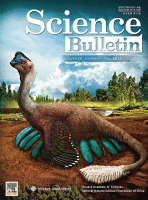
Qingfei Paidu Decoction might significantly inhibit IL-6 and TNF-α signaling pathways in regulating COVID-19-related cytokine storm.
Yifei Dai, Weijie Qiang, Yu Gui, Xue Tan, Tianli Pei, Kequan Lin, Siwei Cai, Liang Sun, Guochen Ning, Jianxun Wang, Hongyan Guo, Yimin Sun, Jing Cheng, Lan Xie, Xun Lan, Dong Wang
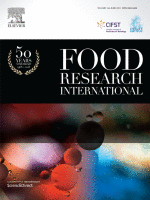
This review further put forward the possibility that cold-hot nature of food and Chinese medicine exert different biological effects on the inflammatory response via regulating the signaling pathways viz. NF-κB and MAPK.
Zhou Y, Xu B.

Experimental Study
The Jian-Pi-Yi-Shen (JPYS) traditional Chinese medicine formula aids in the alleviation of renal dysfunction and fibrosis in chronic kidney disease (CKD) rats by combating inflammation and cellular apoptosis.
Zhou F, Zou X, Zhang J, Wang Z, Yang Y, Wang D
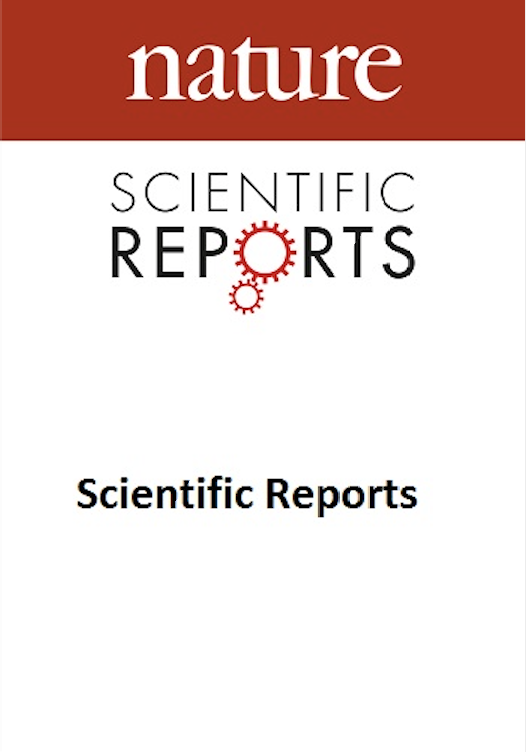
Network Pharmacology
The traditional formula Danggui Beimu Kushen Wan (DBKW) contains multi-targeting agents that simultaneously act on more than one pathway in prostate cancer.
Li H, Hung A, Yang AWH

Experimental Study
Ginger supplementation can prevent ethanol-induced reproductive dysfunction by improving hormone levels, reducing oxidative damage, inflammation, and regulating genes involved in testosterone synthesis.
Li N, Xing Y, Sultan AH, Raeeszadeh M, Akbari A, Liu H

Review Article
Regular coffee consumption, due to its bioactive compounds, may have protective effects against chronic disorders and certain neurodegenerative conditions.
Socała K, Szopa A, Serefko A, Poleszak E, Wlaź P

Review Article
Pumpkin seeds carry bioactive compounds with antidiabetic, antidepressant, antioxidant, antitumor, and cytoprotective activities, also aiding in microbiological infections and specific organ disorders.
Dotto JM, Chacha JS
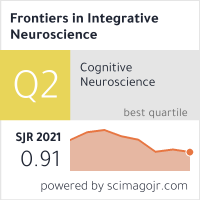
Experimental Study
Needling at the GB20 acupoint in Traditional Chinese Medicine can reverse the expression of certain genes related to axon development and regeneration in optic neuritis.
Chen J, Zhang L, Gan X, Zhang R, He Y, Lv Q, Fu H, Liu X, Miao L

Theoretical Article
Coffee, like many fruits and vegetables, activates a cellular response that boosts antioxidants and repair enzymes, which contributes to a lower risk of several diseases.
Kolb H, Kempf K, Martin S

Network Pharmacology
Chinese medicine herb Bai Zhu might combat chronic gastritis by influencing inflammatory response, amino acid synthesis and energy metabolism.
Yang S, Zhang J, Yan Y, Yang M, Li C, Li J, Zhong L, Gong Q, Yu H
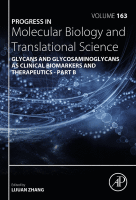
Network Pharmacology
Tremella fuciformis polysaccharide, a major bioactive component in the edible medicinal mushroom, exhibits substantial health benefits, including enhancing the immune system, combatting tumors, and delaying aging.
Yang D, Liu Y, Zhang L.
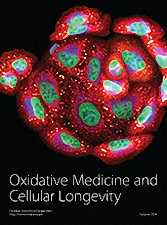
Systematic Review
The health benefits of goji berries include enhancing hemopoiesis, antiradiation, antiaging, anticancer, improvement of immunity, and antioxidation.
Zheng Feei Ma, Hongxia Zhang, Sue Siang Teh, Chee Woon Wang, Yutong Zhang, Frank Hayford, Liuyi Wang, Tong Ma, Zihan Dong, Yan Zhang, Yifan Zhu,

Systematic Review
Goji berries, rich in antioxidants, confer health benefits including protection against aging, cancer, and radiation, as well as enhancing immunity and blood production.
Zheng Feei Ma, Hongxia Zhang, Sue Siang Teh, Chee Woon Wang, Yutong Zhang, Frank Hayford, Liuyi Wang, Tong Ma, Zihan Dong, Yan Zhang, Yifan Zhu,

Experimental Study
Matcha green tea potentially inhibits the growth of breast cancer cells by disrupting metabolic action within the cells and reprogramming their activities.
Bonuccelli G, Sotgia F, Lisanti MP

Review Article
Honey, a natural food supplement, emerges as a potent therapeutic antioxidant with diverse medicinal effects, including wound healing, antibacterial, anti-inflammatory, antifungal, antiviral, and antidiabetic properties, suggesting its potential as a novel antioxidant in managing oxidative stress-related diseases.
Ahmed S, Sulaiman SA, Baig AA, Ibrahim M, Liaqat S, Fatima S, Jabeen S, Shamim N, Othman NH
Executive Summary
Write an executive summary in the form of a blog article on the topic of "Research into Chinese medicine treatment for Molecular Mechanism" summarising the research below and using language that can be easily understood by patients and avoiding medical jargon using a professional and caring tone of voice.
Write an executive summary in the form of a blog article on the topic of "Researched Chinese medicine treatments for Molecular Mechanism" summarising the research below in an objective and easy to understand way, and using language that can be easily understood by patients. Group the article into Chinese medicine treatments first, followed by nutrition and other treatments. Avoid using medical jargon and use a professional and caring tone of voice.
Write me a concise but easy to understand executive summary on the topic of "Chinese medicine treatments for Molecular Mechanism" based on the following research that I will give you. Your summary should be 2 paragraphs long in Australian English spelling and include references to the studies.
A Review Article published in 2024 in the journal Foods found that Jujube, a Chinese native plant with numerous active components, exhibits calming effects, nourishes blood, and strengthens the spleen and stomach, alongside promising neuroprotective and cardiovascular benefits. This study statistically evaluated and tracked the research status of Jujube over the past two decades. The research observed, among other things, the plant's traditional use in calming nerves, nourishing blood, and strengthening the spleen and stomach in traditional Chinese medicine. The study found that the Jujube has numerous effective components, including polysaccharides, phenols, and triterpene acids. The study delved into understanding how these components can provide a variety of pharmacological activities. Such activities include neuroprotection, as well as the prevention and treatment of cardiovascular diseases. The study also expounded comprehensively the molecular mechanisms and efficacies of Jujube. The research, therefore, provides an exhaustive appraisal of the pharmacological potentials of the Jujube plant and its prospective industrial relevance in food and pharmaceutical industries.
A Experimental Study published in 2023 in the journal Heliyon found that Qi Shen Tang, a traditional Chinese medicine, was found to suppress retinal cell death in retinitis pigmentosa by inhibiting a process called ferroptosis. The researchers investigated the potential mechanism of Qi-Shen-Tang (QST), a combination of two traditional Chinese medicines, on retinitis pigmentosa, an eye disease. They induced a retinitis pigmentosa model in mice while subsequently treating them with QST. They then examined the impact of the medicine on the tissue morphology and function of the retina in these model mice, in addition to monitoring factors such as retinal blood flow and fundus structure. The study found that the treatment with QST led to notable improvements in the retinal tissue morphology and function. In addition, they observed an increase in retinal blood flow and normalization of the fundus structure. Following the treatment, the amounts of iron and malondialdehyde in the retinal tissue were significantly reduced, while the levels of superoxide dismutase, glutathione, and the protein expressions of various enzymes significantly increased. Molecular docking results also revealed potential interactions between the components of QST and key proteins of a particular signaling pathway, namely the Nuclear factor erythroid 2-related factor 2/ Glutathione peroxidase 4 pathway. The results suggest that QST may inhibit ferroptosis by suppressing this signaling pathway, thereby mitigating retinitis pigmentosa-induced damage to the retinal tissue.
A Review Article published in 2023 in the journal Critical Reviews in Food Science and Nutrition found that Theabrownins, a major ingredient in dark tea, significantly contribute to multiple health benefits by modulating lipid metabolism, reducing weight gain, and preventing diseases, surpassing other tea types. The research focuses on theabrownins, macromolecular pigments found in dark tea, believed to have numerous health benefits. These pigments derive from the oxidative polymerization of tea polyphenols and are observed to have a reddish-brown color and a mellow taste. One of the primary aspects of the research is the method of generation of theabrownins, which is mainly through microbial fermentation. This method seemingly enhances the health-promoting qualities of dark tea, especially its hypolipidemic effect, compared to other tea variants. The results of the study affirm the host of health benefits provided by theabrownins - including the modulation of lipid metabolism, reduction in body weight gain, attenuation of diabetes, mitigation of NAFLD, scavenging ROS, and prevention of tumors. Particular attention was given to the role that theabrownins play in influencing the gut microbiota, leading to significant health benefits. Despite some limitations, these factual conclusions advocate the potential of dark tea in fostering human health, premised upon its theabrownins content.
A Review Article published in 2022 in the journal Biomedicine & Pharmacotherapy found that Pomegranate extract and its phytochemicals can potentially inhibit severe acute respiratory syndrome coronavirus 2 (SARS-COV-2) and improve gut microbiota, preventing obesity and diabetes. The study employs the use of in silico molecular docking methodologies to demonstrate that extract from pomegranates and their phytochemicals can serve as inhibitors of severe acute respiratory syndrome coronavirus 2's spike protein and the angiotensin-converting enzyme 2 receptor contact. These findings are further reinforced by clinical trials which suggest that pomegranates can also alleviate non-alcoholic fatty liver disease, metabolic syndrome, dental infections, and symptoms of menopause. This study has also identified numerous active compounds within pomegranates such as alkaloids, anthocyanidins, tannins, flavonoids, phenolics, proanthocyanidins, sterols, terpenes, terpenoids, xanthonoids, fatty acids, organic acids, lignans, saccharides, and vitamin C. This mixture of active compounds is believed to significantly contribute to the broad array of pharmacological activities identified within the pomegranate. This includes anti-diabetic, anti-tumor, anti-inflammatory, anti-malaria, anti-fibrotic, anti-fungal, and anti-bacterial effects. The extract from this fruit improves gut microbiota which could potentially aid in the prevention of obesity and diabetes.
A Network Pharmacology published in 2022 in the journal Annals of Medicine found that The Gui Zhi-Shao Yao herb pair in traditional Chinese medicine potentially treats chronic pain, anxiety, and depression through interactions with nine key targets. The methodology in this research utilised network pharmacology to explore the active components of the "Gui Zhi-Shao Yao" herb pair and their possible targets. Initially, 15 active compounds were identified through a series of analysis which revealed about 130 potential targets. By considering the intersections between the targets of the "Gui Zhi-Shao Yao" herb pair and chronic pain, anxiety disorder, and mental depression, nine vital targets were identified and listed in order of importance. The results discussion revealed that the "Gui Zhi-Shao Yao" herb pairing acted on the nine identified key targets to alleviate chronic pain, anxiety, and depression. Gene ontology and pathway analysis demonstrated that there were 11 primary pathways, including AGE-RAGE signalling pathway, IL-17 signalling pathway, and TNF signalling pathway. These pathways appear to be actively involved in the pathological processes, providing a holistic understanding of how the "Gui Zhi-Shao Yao" herb pair functions therapeutically.
A Review Article published in 2021 in the journal Frontiers in Pharmacology found that Chinese herbal medicines could alleviate chronic kidney disease symptoms by combating fibrosis, inflammation, oxidative stress, and encouraging repair and regeneration. The study's methodology consisted of both clinical and experimental approaches. It started with an examination of an array of traditional Chinese herbs. The criteria for considered herbs were their clinical efficacy, frequency of use in treating chronic renal disease, and a well-studied mechanism of action. Five herbs, namely, Tanshinone II A, Salvianolic acid A & B, Triptolide, Tripterygium glycosides and a monomer from Kudzu root, made the cut after having met the set criteria. The results showed that these Chinese herbs were found to possess pharmaceutical properties that were effective against fibrosis, inflammation, and oxidative stress. Furthermore, these also showed the potential to promote renal repair and regeneration, which are fundamental for treating chronic kidney disease. These findings suggest a broader scope of therapeutic treatments that could benefit the patients in a more natural and potentially less invasive way.
A published in 2021 in the journal Science Bulletin found that Qingfei Paidu Decoction might significantly inhibit IL-6 and TNF-α signaling pathways in regulating COVID-19-related cytokine storm. We evaluated the effects of 578 herbs and all 338 reported anti-COVID-19 TCM formulae on cytokine storm-related signaling pathways, and identified the key targets of the relevant pathways and potential active ingredients in these herbs. A total of 16 herbs was identified to have a significant inhibitory effect on the IL-6 pathway, while 37 herbs suppress the TNF-α pathway significantly. In the heatmap of gene expression induced by these herbs, more than half of the genes are down-regulated, suggesting that these herbs have a significant inhibitory effect on the expression of cytokine storm-related genes. By combining the HTS2 assay and herb scoring results, we constructed a formula-herb-gene-pathway network diagram of Qingfei Paidu Decoction. In this formula, we identified 4 herbs with an inhibitory effect on the IL-6 or TNF-α pathways, including Guizhi, which significantly inhibits the IL-6 pathway, and Shegan, Baizhu, and Zexie, which significantly inhibit the TNF-α pathway.
A published in 2021 in the journal Food Research International found that This review further put forward the possibility that cold-hot nature of food and Chinese medicine exert different biological effects on the inflammatory response via regulating the signaling pathways viz. NF-κB and MAPK. This review explored that the cold and hot natures are not only linked to the chemical components such as water, carbohydrates, lipids, and amino acids, but also correlated to the biological effects, comprising of energy metabolism, inflammation response, oxidation reaction, immune response, and cell growth and proliferation. Besides, this review further put forward the possibility that cold-hot nature of food and Chinese medicine exert different biological effects on the inflammatory response via regulating the signaling pathways viz. NF-κB and MAPK. More extensive studies are needed to consider the overall connections between both the biological effects and chemical components and how food processing affects the cold-hot nature of the food.
A Experimental Study published in 2021 in the journal Frontiers in Pharmacology found that The Jian-Pi-Yi-Shen (JPYS) traditional Chinese medicine formula aids in the alleviation of renal dysfunction and fibrosis in chronic kidney disease (CKD) rats by combating inflammation and cellular apoptosis. Using an established model of 5/6 nephrectomized (5/6Nx) rats, an evaluation of the effects of the JPYS formula on renal function and fibrosis was conducted. To scrutinize the formula's impacts, markers of apoptosis, inflammation, oxidative stress, and the activity of Nrf2 signaling were measured. Correlative parameters including urinary protein, SCr, BUN, glomerular sclerosis index, tubulointerstitial fibrosis score, and renal histopathology were analyzed to assess the formula's preventive effect on renal dysfunction and fibrosis. The study also evaluated the gene expression associated with fibrosis and related elements such as TGF-β and various types of collagen. The evaluation of JPYS's efficacy revealed significant protection against cell apoptosis, highlighted by altered gene expression of Bcl-2, Bax, caspase 3, caspase 9, and the number of TUNEL-positive cells. Moreover, it was observed that the JPYS formula countered the activation of the NF-κB-mediated inflammatory pathway, exhibiting a decrease in gene expression of numerous inflammatory markers in the kidney. Alongside this, the formula promoted antioxidant performance, alleviating oxidative stress as indicated by antioxidant index indicators and a reduction in reactive oxygen species biomarkers. The study also identified the upswing of essential elements like HO-1 and Nrf2 level and a decline in Keap1 expression, signaling rationale towards the formula's potential relief of renal oxidative damage.
A Network Pharmacology published in 2021 in the journal Scientific Reports found that The traditional formula Danggui Beimu Kushen Wan (DBKW) contains multi-targeting agents that simultaneously act on more than one pathway in prostate cancer. The study investigated the mechanisms of Danggui Beimu Kushen Wan (DBKW) in relation to prostate cancer. DBKW compounds were identified from previous reviews, potential targets for prostate cancer were determined from a literature search, approved drugs and the Open Targets database. Targets were chosen based on their relationship with protein-protein interaction network analysis for a total of 26 targets connected to three cancer-related pathways. Molecular docking using PyRx and AutoDock Vina was used to screen a total of 621 compounds against 21 targets for prostate cancer, generating multiple docking results. The results of the research show that a small number of highly-binding compounds from DBKW could strongly and selectively interact with three identified targets. The top five high-binding-affinity compounds were selected to generate a network. The analysis revealed that compounds from all three herbs within DBKW demonstrated high binding affinity against the 21 targets and may exhibit potential biological activities with these targets, thereby acting upon several pathways of prostate cancer simultaneously.
A Experimental Study published in 2021 in the journal Brazilian Archives of Biology and Technology found that Ginger supplementation can prevent ethanol-induced reproductive dysfunction by improving hormone levels, reducing oxidative damage, inflammation, and regulating genes involved in testosterone synthesis. The methodology involved twenty-four adult male rats divided into four groups for a 28-day experiment. The researchers administered either ethanol or ginger extract to respective groups and then measured varying physiological factors related to reproductive health such as testosterone levels, antioxidant enzyme activity, concentrations of tumor necrosis factor-alpha, and gonadotropins hormones. In addition, gene expressions related to oxidative damage, inflammation, and testosterone synthesis were also examined. Animating the discussion of results, it was observed that the administration of ethanol significantly decreased levels of hormones, oxidative markers, and lowered gene expression involved in testosterone synthesis. Conversely, ethanol caused an increase in inflammatory markers and the expression of genes related to inflammation. On the other hand, rats given a ginger supplement positively reversed these effects, showing significant improvements in all factors, thus leading to the conclusion that ginger can prevent reproductive issues induced by ethanol. The results obtained from the histological study further confirmed these findings, reaffirming that ginger could effectively counter ethanol-induced reproductive dysfunction.
A Review Article published in 2020 in the journal International Journal of Molecular Sciences found that Regular coffee consumption, due to its bioactive compounds, may have protective effects against chronic disorders and certain neurodegenerative conditions. The paper evaluates the neuroprotective potential of the main bioactive elements in coffee: caffeine, chlorogenic acid, caffeic acid, trigonelline, kahweol, and cafestol. The analysis is focused on the coffee beverage as a complex mixture of these bioactive compounds. The comprehensive study includes in vitro and in vivo preclinical tests to determine the specific health benefits each of these compounds can offer. The results indicate that regular coffee intake may have defensive effects against a variety of enduring disorders; including cardiovascular disease, type 2 diabetes, obesity, and some forms of cancer. Additionally, an interesting correlation is found between coffee consumption and a lower risk of developing certain neurodegenerative conditions such as Alzheimer's disease, Parkinson's disease, and dementia. The study also highlights that regular coffee intake could possibly lower the risk of stroke. However, the study mentions that the mechanisms enabling these effects are yet to be fully understood.
A Review Article published in 2020 in the journal Scientific African found that Pumpkin seeds carry bioactive compounds with antidiabetic, antidepressant, antioxidant, antitumor, and cytoprotective activities, also aiding in microbiological infections and specific organ disorders. The methodology utilised an in-depth literature review, compiling evidence-based data from various electronic databases such as ScienceDirect, ResearchGate, PubMed, Scopus and Google Scholar up until January 2020. The focus of the gathered literature was the potential use of pumpkin seeds as a functional food ingredient and assessing the associated biological mechanisms of the bioactive compounds within the seeds. Pumpkin seeds, despite being small, are rich in a wide variety of beneficial nutrients such as amino acids, phytosterols, unsaturated fatty acids, phenolic compounds, tocopherols, cucurbitacins and valuable minerals. The bioactive compounds found within these seeds have shown multiple promising activities. They possess anthelmintic, antidiabetic, antidepressant, antioxidant, antitumor and cytoprotective properties. Additionally, they demonstrate potentials for addressing microbiological infections and specific disorders related to liver and prostate. The compiled literature strongly suggests that pumpkin seeds can be used as both a traditional and functional food ingredient due to the wide array of health benefits they offer.
A Experimental Study published in 2020 in the journal Frontiers in Integrative Neuroscience found that Needling at the GB20 acupoint in Traditional Chinese Medicine can reverse the expression of certain genes related to axon development and regeneration in optic neuritis. To explore the molecular mechanisms of GB20 acupoint needling treatment on Optic Neuritis, a common symptom of Multiple Sclerosis, an Experimental Autoimmune Encephalomyelitis (EAE) mouse model with EAE-associated optic neuritis was utilized. Traditional Chinese Medicine practices of needling at the GB20 acupoint and GV16 acupoint control treatment were applied, followed by RNA sequencing of the retinal transcriptome to identify differentially expressed genes. In the discussion of the results, it was found that of the genes affected by optic neuritis, needling at the GB20 acupoint reversed the expression of 21 genes, including Nr4a3, Sncg, Uchl1, and Tppp3. These genes are particularly involved in axon development and regeneration, suggesting a beneficial effect from GB20 acupoint needling. Moreover, it was discovered that GB20 needling also influenced the circadian rhythm in the mouse retina with optic neuritis. The GV16 was also identified to be an effective control site for GB20 treatment in animal studies.
A Theoretical Article published in 2020 in the journal Nutrients found that Coffee, like many fruits and vegetables, activates a cellular response that boosts antioxidants and repair enzymes, which contributes to a lower risk of several diseases. The research paper proposes a new perspective on the health benefits of habitual coffee consumption. Instead of focusing on individual elements in coffee, the study compares coffee as a whole, acting as a plant food, with the advantageous properties of many vegetables and fruits. By linking coffee, vegetables and fruits, researchers identified a common mechanism that promotes health - the activation of an adaptive cellular response which leads to an upsurge of proteins involved in cell protection such as antioxidant, detoxifying and repair enzymes. It was also noted that this response hinges on the activation of the Nuclear factor erythroid 2-related factor-2 (Nrf2) system by phenolic phytochemicals, leading to the expression of cell defense genes. The discussion of the paper's results reveals that coffee plays a significant role in health promotion, the main reason being that it is the primary dietary source of phenolic acids and polyphenols in the developed world. Additionally, a supportive function might be associated with the modulation of the gut microbiota by non-digested prebiotic constituents of coffee. Conclusively, the paper suggests that coffee uses similar health promotion pathways as other vegetables and fruits, and that coffee beans could be seen as healthy vegetable food and a leading supplier of dietary phenolic phytochemicals.
A Network Pharmacology published in 2020 in the journal Frontiers in Pharmacology found that Chinese medicine herb Bai Zhu might combat chronic gastritis by influencing inflammatory response, amino acid synthesis and energy metabolism. Methodology: Network pharmacology was employed to study the active ingredients, drug targets, and critical pathways of AMK in treating chronic gastritis. Initially, four databases were scoured to single out 77 candidate ingredients of AMK, reducing that to 27 active ingredients identified for CG treatment. Furthermore, 25 overlapping gene symbols linked to CG and drugs were procured from GeneCards and OMIM databases. The construction of a protein-protein interaction network and TCM comprehensive network followed this, resulting in 528 Gene Ontology terms and 26 pathways obtained through GO pathways and KEGG pathways enrichment analyses. Results: The investigation focused on the interleukin-17 signaling pathway, C-type lectin receptor signaling pathway, tumor necrosis factor signaling pathway, and AGE-RAGE signaling pathway in diabetic complications as crucial points and leading pathways for treating chronic gastritis. The study suggests that AMK potentially impacts the inflammatory response, amino acid synthesis, and energy metabolism. These influential active ingredients and targets have been experimentally validated for reliability, offering new insights into the systematic exploration of the traditional Chinese medicine mechanism of action.
A Network Pharmacology published in 2019 in the journal Progress in Molecular Biology and Translational Science found that Tremella fuciformis polysaccharide, a major bioactive component in the edible medicinal mushroom, exhibits substantial health benefits, including enhancing the immune system, combatting tumors, and delaying aging. The study analyzed various fractions of Tremella fuciformis polysaccharide (TFPS) which is extracted from the "Yiner" mushroom under different conditions leading to variations in molecular weight. The TFPS comprises various monosaccharides including mannose, xylose, fucose, glucuronic acid, glucose, and galactose. One of the characterized structures consists of a linear mannose backbone with branched off chains of xylose, fucose and glucuronic acid. Biochemical, pharmacological, and clinical studies involving TFPS spanning 46 years (1972-2018) were drawn from the likes of PubMed, China National Knowledge Infrastructure and Wanfang database and comprehensively reviewed. Over one hundred independent studies pointed to the multiple physiological and health-promoting effects of TFPS. These include benefits such as immunomodulation, antitumor, anti-oxidation, anti-aging, hypoglycemic, and hypolipidemic effects. An example of its practical application is its usage in enteric-coated capsules, approved by the Chinese Food and Drug Administration in 2002, to treat cancer patients suffering from leukopenia induced by chemotherapy and radiotherapy. This component is also used as a supplementary drug for the treatment of chronic persistent hepatitis and chronic active hepatitis, showing the versatility and progressive impact of TFPS.
A Systematic Review published in 2019 in the journal Oxidative Medicine and Cellular Longevity found that The health benefits of goji berries include enhancing hemopoiesis, antiradiation, antiaging, anticancer, improvement of immunity, and antioxidation. Goji berries are a high antioxidant potential fruits which alleviate oxidative stress to confer many health protective benefits such as preventing free radicals from damaging DNA, lipids, and proteins. There is a better protection through synergistic and additive effects in fruits and herbal products from a complex mixture of phytochemicals than from a single phytochemical. The health benefits of goji berries include enhancing hemopoiesis, antiradiation, antiaging, anticancer, improvement of immunity, and antioxidation.
A Systematic Review published in 2019 in the journal Oxidative Medicine and Cellular Longevity found that Goji berries, rich in antioxidants, confer health benefits including protection against aging, cancer, and radiation, as well as enhancing immunity and blood production. The methodology of the study focused on a thorough review of the bioactive compounds and pharmacological properties of goji berries, particularly targeting their molecular mechanisms of action. This involved looking at the different ways these fruits are consumed, such as in soups, herbal teas, tinctures, wine, and juice, and how these methods influence the antioxidants present in the fruits. Goji berries were found to offer a range of health benefits due to their ability to alleviate oxidative stress. These benefits include enhancing hemopoiesis (blood formation), offering antiradiation and antiaging properties, inhibiting cancer, improving immunity, and providing antioxidation. Furthermore, the study emphasized that the complex mixture of phytochemicals found in fruits and herbal products like goji berries provide a cumulative protective effect, which proves more beneficial compared to extracting and using one single phytochemical.
A Experimental Study published in 2018 in the journal Aging found that Matcha green tea potentially inhibits the growth of breast cancer cells by disrupting metabolic action within the cells and reprogramming their activities. The research utilized MCF7 cells, a human breast cancer cell line, as a standard model for testing. To understand the effects of Matcha green tea (MGT) at the cellular level, the team conducted two sets of detailed examinations, metabolic phenotyping and proteomics analysis. Metabolic phenotyping explored the effects of the MGT on cellular metabolism, looking at its influence on both oxidative mitochondrial metabolism and glycolytic flux. Proteomics analysis identified specific proteins and enzymes which were affected by the MGT treatment. The findings from the metabolic phenotyping displayed that MGT treatment slowed down both oxidative mitochondrial metabolism and glycolytic flux, pushing cancer cells towards a less active metabolic state. The proteomics analysis discovered specific mitochondrial proteins and glycolytic enzymes down-regulated by the introduction of MGT. Detailed bioinformatics analysis of the proteomics data revealed that the MGT drastically affected mTOR signalling, particularly down-regulating numerous components of the 40S ribosome, suggesting a possibility of MGT being used as an inhibitor of mTOR. Other pathways, including anti-oxidant response, cell cycle regulation, and interleukin signalling, were also significantly affected.
A Review Article published in 2018 in the journal Oxidative Medicine and Cellular Longevity found that Honey, a natural food supplement, emerges as a potent therapeutic antioxidant with diverse medicinal effects, including wound healing, antibacterial, anti-inflammatory, antifungal, antiviral, and antidiabetic properties, suggesting its potential as a novel antioxidant in managing oxidative stress-related diseases. The research extensively reviews honey's medicinal effects, emphasizing its role as a therapeutic antioxidant. The study explores various mechanisms, including the modulation of multiple signaling pathways and molecular targets. The evidence-based research underscores honey's role in alleviating diseases linked to oxidative stress. The reviewed pathways include caspase induction, cytokine stimulation, cell cycle regulation, and modulation of inflammatory markers. The comprehensive exploration of honey's therapeutic potential indicates its promise as a standalone or adjuvant antioxidant, necessitating further experimental and clinical investigation.
Moderation Tools
Topic
Sign In
Users not signed in are limited to viewing the 5 most recent items of content.
